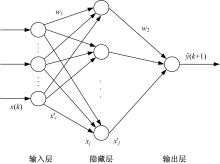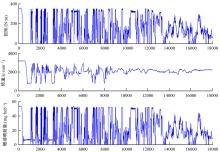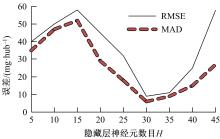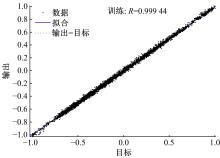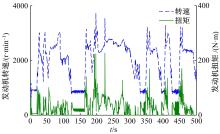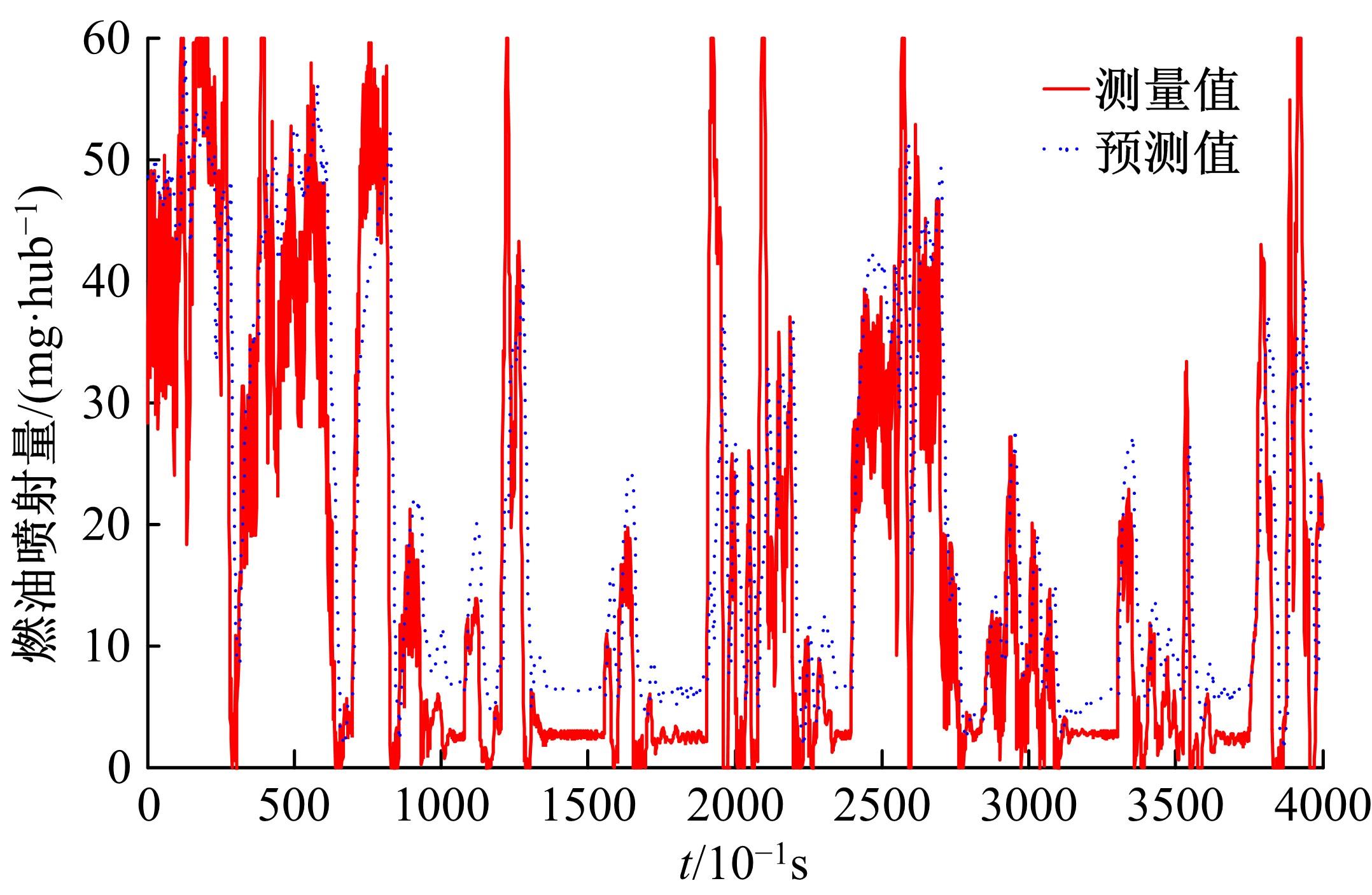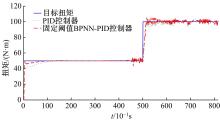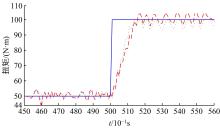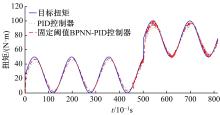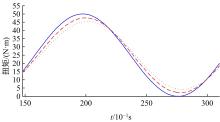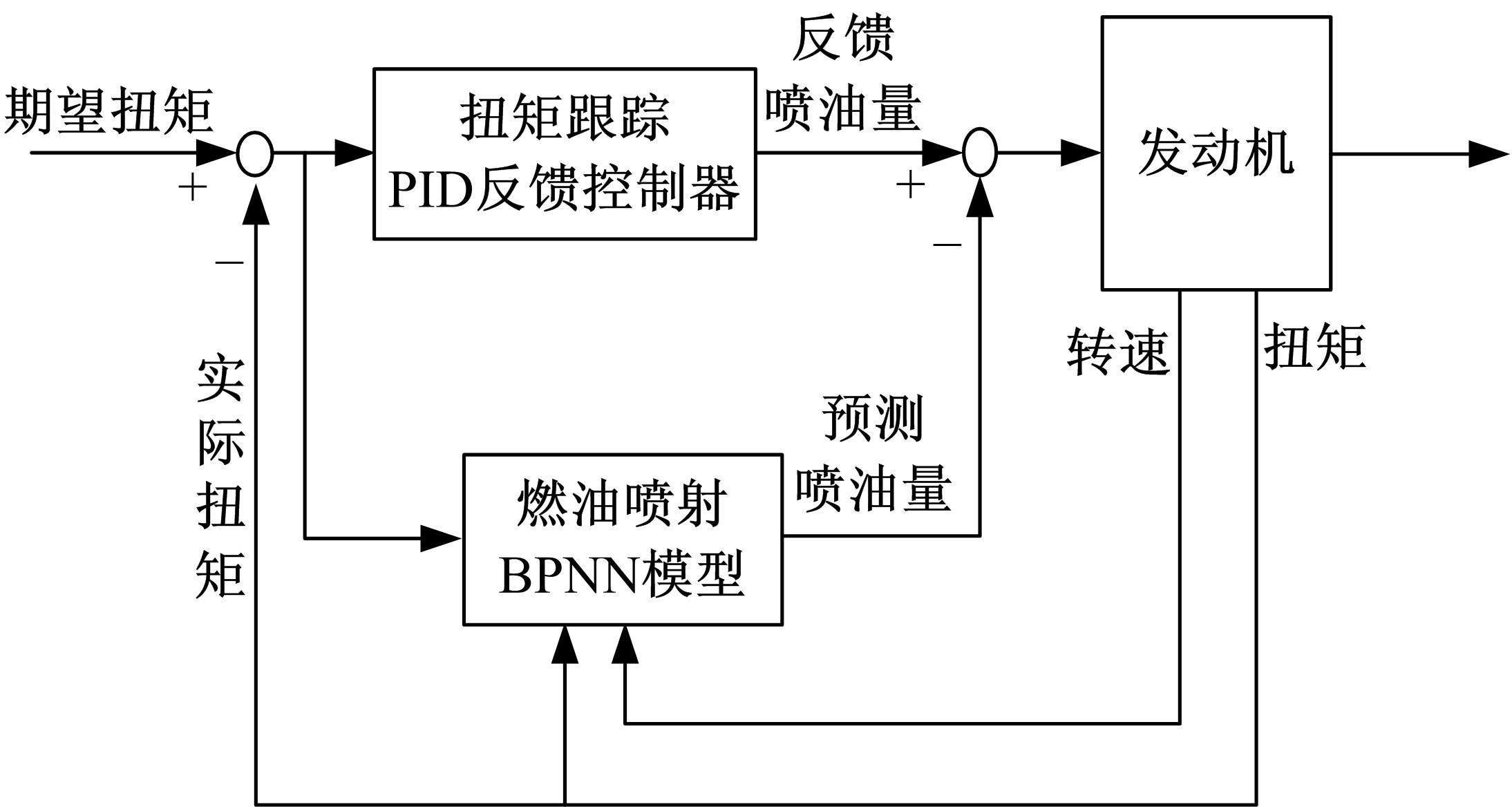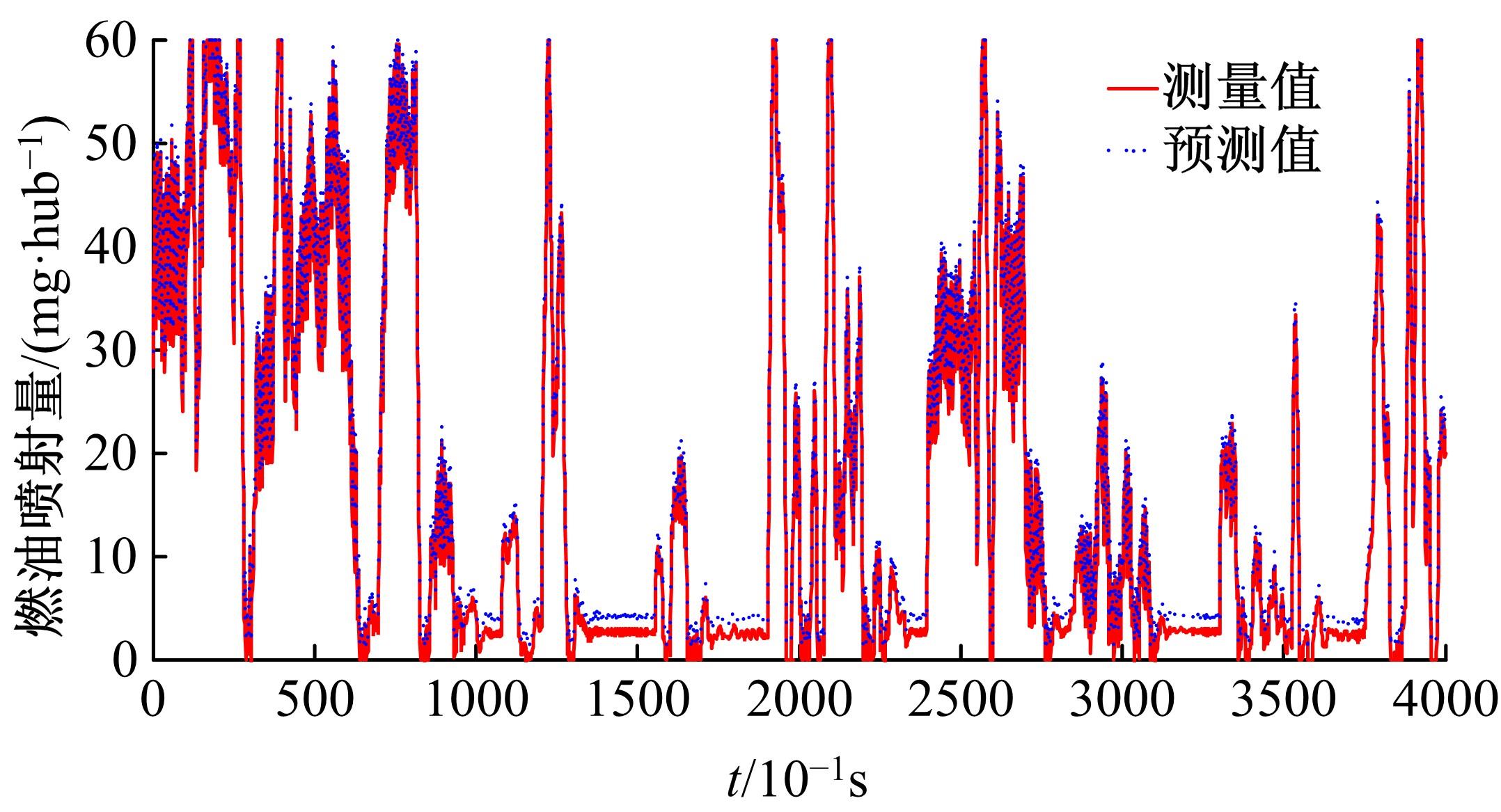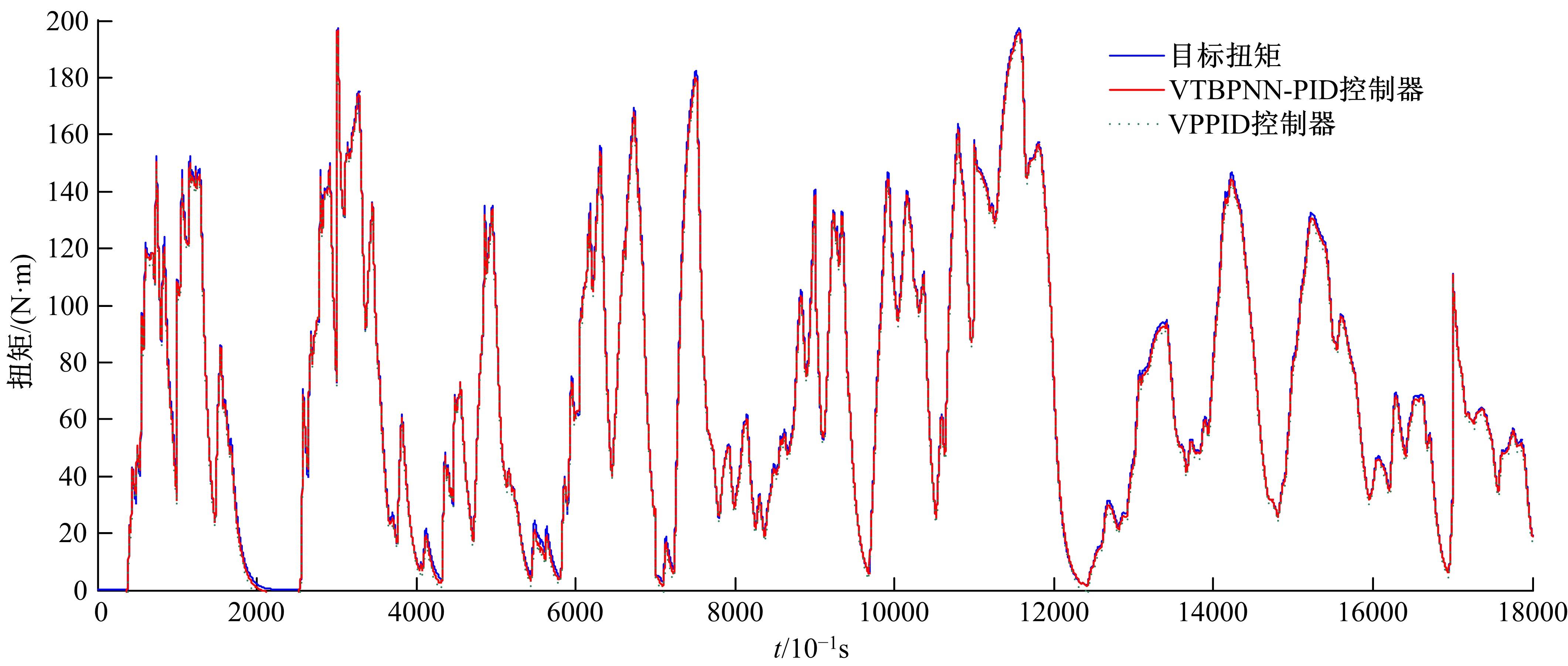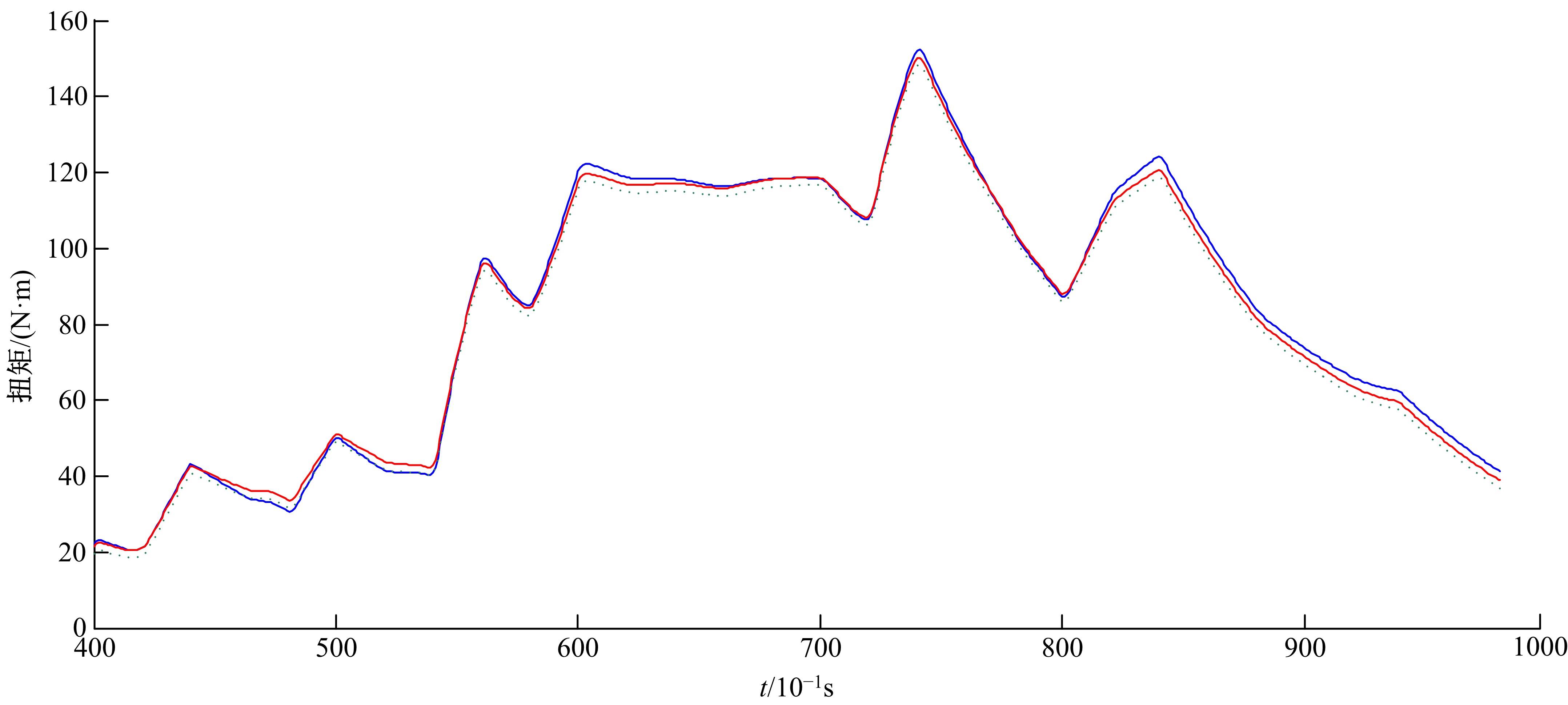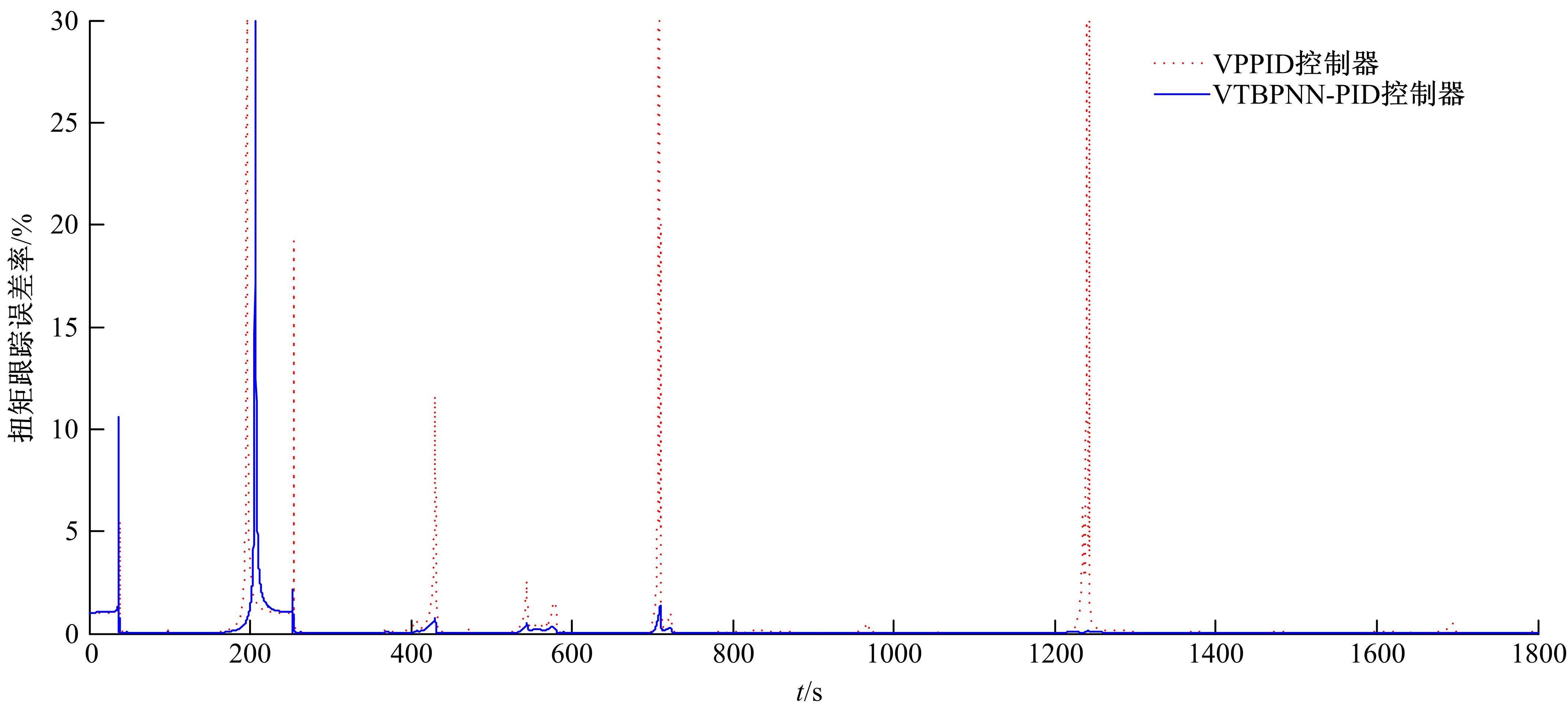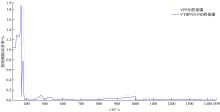Journal of Jilin University(Engineering and Technology Edition) ›› 2021, Vol. 51 ›› Issue (4): 1405-1413.doi: 10.13229/j.cnki.jdxbgxb20200280
Real-time torque tracking control based on BPNN online learning prediction model
Yan-hua DONG1( ),Jing-wei LIU1,2,Jing-hua ZHAO1,3(
),Jing-wei LIU1,2,Jing-hua ZHAO1,3( ),Liang LI1,Fang-xi XIE3
),Liang LI1,Fang-xi XIE3
- 1.College of Computer,Jilin Normal University,Siping 136000,China
2.College of Information Technology,Changchun Finance College,Changchun 130028,China
3.State Key Laboratory of Automotive Simulation and Control,Jilin University,Changchun 130022,China
CLC Number:
- TP399
| 1 | Liu B, Wang R, Zhao G, et al. Prediction of rock mass parameters in the TBM tunnel based on BP neural network integrated simulated annealing algorithm[J]. Tunnelling and Underground Space Technology, 2020,95(c):103103-103103. |
| 2 | Moskwa J J, Hedrick J K. Modeling and validation of automotive engines for control algorithm development[J]. Journal of Dynamic Systems Measurement and Control-transactions of The ASME, 1992, 114(2): 278-285. |
| 3 | Hirahara H, Yoshida K, Iwase M, et al. Torque estimation based on nonlinear engine model considering crankshaft torsion[C]∥IEEE/ASME International Conference on Advanced Intelligent Mechatronics, Piscataway, USA,2010: 682-687. |
| 4 | Anjum R, Yar A, Yousufzai I K, et al. Second order sliding mode based speed tracking control for torque management of gasoline engines[C]∥Asian Control Conference, Kitakyushu-shi, Japan,2019: 555-560. |
| 5 | Anjum R, Yar A, Bhatti A I, et al. Dual loop speed tracking control for torque management of gasoline engines[C]∥European Control Conference, Naples, Italy,2019: 3084-3089. |
| 6 | 陈虹,郭露露,宫洵,等. 智能时代的汽车控制[J]. 自动化学报, 2020, 46(7): 1313-1332. |
| Chen Hong, Guo Lu-lu, Gong Xun, et al. Automotive control in the age of intelligence[J]. Journal of Automation, 2020, 46(7): 1313-1332. | |
| 7 | Zhao J, Hu Y, Gao B, et al. Sequential optimization of eco-driving taking into account fuel economy and emissions[J]. IEEE Access,2019,7:130841-130853. |
| 8 | Park J, Choi S B, Oh J, et al. Adaptive torque tracking control during slip engagement of a dry clutch in vehicle powertrain[J]. Mechanism and Machine Theory, 2019,134: 249-266. |
| 9 | Kang M, Shen T. Modeling and optimal control for torque tracking of spark-ignition engines with low pumping loss[C]∥Chinese Control Conference, Chendu, China, 2016: 8956-8961. |
| 10 | Vuelvas J, Archbold G, Ruiz F. MPC Weighted sum approach applied to torque tracking and CO2emission reduction on engines[C]∥ IEEE 3rd Colombian Conference on Automatic Control (CCAC), Cartagena, Colombia, 2017: 1-6. |
| 11 | Bouvenot J B,Andlauer B,Stabat P,et al. Gas stirling engine µ CHP boiler experimental data driven model for building energy simulation[J]. Energy and Buildings, 2014, 84: 117-131. |
| 12 | 尤晓东,苏崇宇,汪毓铎. BP神经网络算法改进综述[J]. 民营科技,2018, 23(4):146-147. |
| You Xiao-dong,Su Cong-yu,Wang Yu-duo. Summary of improvement of BP neural network algorithm[J]. Private Technology, 2018,23(4):146-147. | |
| 13 | Ong C K,Yao T K, Alfred R, et al. A Comparison of BPNN,RBF, and ENN in Number Plate Recognition[C]∥ Second International Conference on Soft Computing in Data Science, Kuala Lumpur, Malaysia,2016: 37-47. |
| 14 | He J, Yang W, Wang J, et al. Fast HEVC coding unit decision based on BP-neural network[J]. International Journal of Grid and Distributed Computing, 2015, 8(4): 289-300. |
| 15 | Venayagamoorthy G K, Rohrig K, Erlich I. One step ahead: short-term wind power forecasting and intelligent predictive control based on data analytics[J]. IEEE Power & Energy Magazine, 2012, 10(5): 70-78. |
| 16 | Rahman M A, Hoque M A. On-line adaptive artificial neural net-work based vector control of permanent magnet synchronous motors[J]. IEEE Transactions on Energy Conversion, 1998, 13 (4):311-318. |
| 17 | Hu Y, Chen H, Wang P, et al. Nonlinear model predictive controller design based on learning model for turbocharged gasoline engine of passenger vehicle[J]. Mechanical Systems and Signal Processing, 2018,109: 74-88. |
| [1] | Ya-hui ZHAO,Fei-yang YANG,Zhen-guo ZHANG,Rong-yi CUI. Korean text structure discovery based on reinforcement learning and attention mechanism [J]. Journal of Jilin University(Engineering and Technology Edition), 2021, 51(4): 1387-1395. |
| [2] | Fu-hua SHANG,Mao-jun CAO,Cai-zhi WANG. Local outlier data mining based on artificial intelligence technology [J]. Journal of Jilin University(Engineering and Technology Edition), 2021, 51(2): 692-696. |
| [3] | Hai-ying ZHAO,Wei ZHOU,Xiao-gang HOU,Xiao-li ZHANG. Double-layer annotation of traditional costume images based on multi-task learning [J]. Journal of Jilin University(Engineering and Technology Edition), 2021, 51(1): 293-302. |
| [4] | Dan-tong OUYANG,Cong MA,Jing-pei LEI,Sha-sha FENG. Knowledge graph embedding with adaptive sampling [J]. Journal of Jilin University(Engineering and Technology Edition), 2020, 50(2): 685-691. |
| [5] | Yi-bin LI,Jia-min GUO,Qin ZHANG. Methods and technologies of human gait recognition [J]. Journal of Jilin University(Engineering and Technology Edition), 2020, 50(1): 1-18. |
| [6] | Qian XU,Ying LI,Gang WANG. Pedestrian-vehicle detection based on deep learning [J]. Journal of Jilin University(Engineering and Technology Edition), 2019, 49(5): 1661-1667. |
| [7] | Wan-fu GAO,Ping ZHANG,Liang HU. Nonlinear feature selection method based on dynamic change of selected features [J]. Journal of Jilin University(Engineering and Technology Edition), 2019, 49(4): 1293-1300. |
| [8] | Dan⁃tong OUYANG,Jun XIAO,Yu⁃xin YE. Distant supervision for relation extraction with weakconstraints of entity pairs [J]. Journal of Jilin University(Engineering and Technology Edition), 2019, 49(3): 912-919. |
| [9] | GU Hai-jun, TIAN Ya-qian, CUI Ying. Intelligent interactive agent for home service [J]. Journal of Jilin University(Engineering and Technology Edition), 2018, 48(5): 1578-1585. |
| [10] | DONG Sa, LIU Da-you, OUYANG Ruo-chuan, ZHU Yun-gang, LI Li-na. Logistic regression classification in networked data with heterophily based on second-order Markov assumption [J]. Journal of Jilin University(Engineering and Technology Edition), 2018, 48(5): 1571-1577. |
| [11] | WANG Xu, OUYANG Ji-hong, CHEN Gui-fen. Measurement of graph similarity based on vertical dimension sequence dynamic time warping method [J]. 吉林大学学报(工学版), 2018, 48(4): 1199-1205. |
| [12] | ZHANG Hao, ZHAN Meng-ping, GUO Liu-xiang, LI Zhi, LIU Yuan-ning, ZHANG Chun-he, CHANG Hao-wu, WANG Zhi-qiang. Human exogenous plant miRNA cross-kingdom regulatory modeling based on high-throughout data [J]. 吉林大学学报(工学版), 2018, 48(4): 1206-1213. |
| [13] | LI Xiong-fei, FENG Ting-ting, LUO Shi, ZHANG Xiao-li. Automatic music composition algorithm based on recurrent neural network [J]. 吉林大学学报(工学版), 2018, 48(3): 866-873. |
| [14] | LIU Jie, ZHANG Ping, GAO Wan-fu. Feature selection method based on conditional relevance [J]. 吉林大学学报(工学版), 2018, 48(3): 874-881. |
| [15] | HUANG Lan, JI Lin-ying, YAO Gang, ZHAI Rui-feng, BAI Tian. Construction of disease-symptom semantic net for misdiagnosis prompt [J]. 吉林大学学报(工学版), 2018, 48(3): 859-865. |
|
||
